You are here
Vesper Peak is a beauitful summit off the Mountain Loop Highway in Washington's North Cascades, and is a great peakbagging objective for Seattle-ites, as it's a relatively short drive to the trailhead compared to some of the other North Cascade objectives. Vesper peak gets most of its traffic from hikers, but Cascade hardman Darin Berdinka has put in an unbelievable amount of time finding, rap-cleaning, and establishing moderate alpine routes in this area, and Ragged Edge is one of the most popular of these new climbs. Ragged Edge is a spectacular line in an unbeatable alpine setting, and while it's only 6 pitches, due to the traversing approach, the climb feels far more exposed, hanging 1,000 feet over Vesper Glacier.
While the grade is moderate at 5.7, this is not a climb for a beginner. The Ragged Edge requires both leaders and followers to be comfortable dealing with tons of exposure, placing pro, building anchors, routefinding, as well as managing all of the complexity of an isolated alpine rock route. If you look up trip reports for this route, you'll find evidence of many sufferfests. But if you have the appropriate experience, don't let these warnings turn you away, as this climb is true to the grade and definitely worth doing.
Notes
- Seasonality: as in all alpine routes, you'll need to figure out when to go for this climb. This climb requires an exposed traverse across the north face of the mountain from the NE shoulder of Vesper Peak to the climb proper, and this face holds snow longer than the surrounding area. If you try to do the climb too early in the season, you'll need to traverse on steep snow with a terrifying drop to the glacier below, and you'll need to carry axes, crampons, and maybe pickets for pro. Once the snow melts out, the climb is typically in good shape until mid-September, when snow again starts sticking to the north face, making the traverse and belay stances unpleasant. The photos in this trip report were taken in mid-September.
- Popularity: this route, due to its moderate grade and big views, is quite popular, which is exacerbated by this route's short season. If you're doing the climb in mid-season, you should try to climb this route on a weekday. And if you have to climb on a weekend, bring beta for the nearby climbs. True Grit (5.8), a trad climb just left of Ragged Edge, is a more direct way to the summit, and sometimes has less traffic. Fish and Whistle (5.10-) is a yet harder trad route, further left from True Grit. And Mile High Club (5.10a), a better protected sport climb, can be found along the approach before Headlee Pass.
- Access: they've been doing construction on the access road off and on for a few years now, so try and check to make sure you can get all the way to the trailhead.
- Safety:
- Navigation: Take navigation seriously on the approach to this route, and ensure that you have solid navigation skills and ideally a GPS track to guide you back to the trailhead once you're on the summit. The descent is not as straightforward as you'd assume, and people have gotten extremely lost on this peak.
- Common sense: Be cautious of loose rock, while this route has been climbed enough now that it should have pretty solid rock, but multiple people have been injured due to loose rock.
The Climb
This approach isn't all that long or overly steep, but it takes a surprisingly long time due to the rough trail. You'll want to get started early to make sure you've got enough time to finish the climb and descend before nightfall, so you may want to consider sleeping at or near the trailhead the night before.
The morning of your climb, you'll head up the surprisingly scrappy trail, across a few creeks, and up big heathery alpine meadows with tricky footing. After some hiking, you'll enter a large valley. Look at the craggy peak to your left—that's Morning Star Peak—home to the 6 pitch sport route Mile High Climb (5.10a). But you'll continue up valley, across occasional talus slopes, before heading steeply up a series of switchbacks to Headlee Pass. Take note of Headlee Pass as you contour up right to the lake. When people get lost on the descent, this is where it happens.
Suddenly, you're in the alpine! Refill water at the lake if you need to, before heading up the broad ridge toward Vesper Peak. By this time, you'll probably be feeling the approach, but take comfort in knowing you're getting close to the climb proper. Around 5,600', you'll leave the standard Vesper trail and head toward the small saddle to your northwest (around a tenth of a mile away). You can stash a bag in this area if you're planning to climb with only one bag (you'll grab whatever you stash on the way back down). Once you reach the saddle, you'll see the steep traverse that will bring you to the base of the climb. Enjoy the exposure here, it's surprisingly heady!
At a large conifer, you'll be within sight of the climbing. Check to see how busy the various routes are and make your final call on what you'll be climbing. Then head to the base and get racked up.
There are two alternative starts to the Ragged Edge - the left, original route, which is easier 4th and 5th class scrambling for two pitches, or a direct route with slightly harder climbing, first on a layback to some slabs. Both these routes will meet up at the top of pitch 2.
From here, you'll head up pitch 3: a solid arete with fixed pins before finishing the pitch by anchor at a ledge. The next pitch (pitch 4) heads right, up zig-zagging cracks and big stacked blocks to a fixed anchor before the "Ragged Edge" pitch. Pitch 5 is the eponymous pitch, and where you'll need to summon your courage. The route heads straight up a crack to two bolts before traversing hard right for 50' to the obvious arete. Beneath you will be an enormous undercut roof, so it will feel like you're climbing directly over the glacier, which drops like any abyss below you. Place gear often because your follower will be as exposed as you are on the traverse, and if they fall off, it will be a big swing. Once you've finished pitch 5, pitch 6 is a final hero-climb up big jugs and some slippery heather to the true summit. Be careful as you emerge at the top, you don't want to startle any hikers off the edge.
At the summit, you'll build an anchor, bring up your second and enjoy the view. All that remains is a beautiful ramble. Hike southeast curving to the east, following hiker cairns down the low-angle slabs, before getting back to 5,600 feet where you left the trail. From here, follow your route back down, past the lake, through Headlee Pass, and down the trail back to your car.

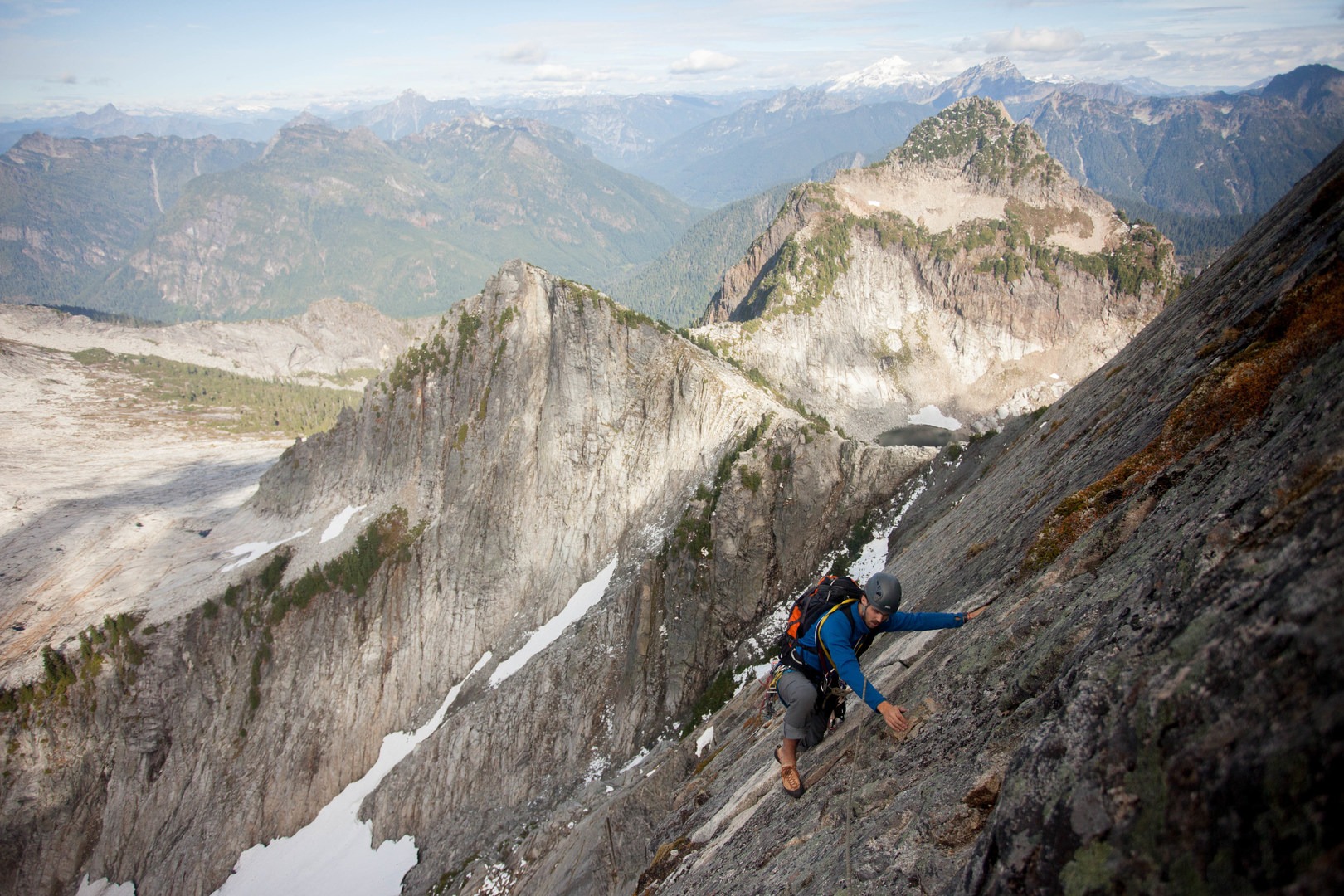


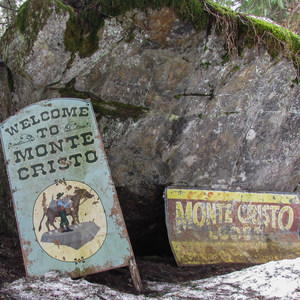
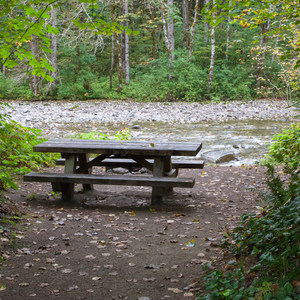
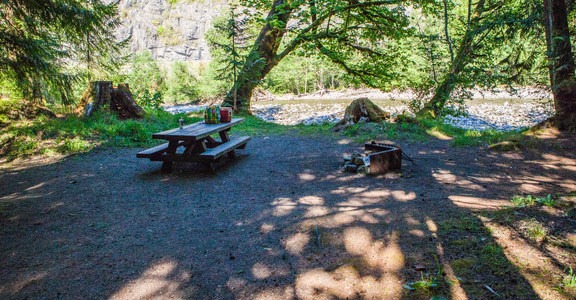
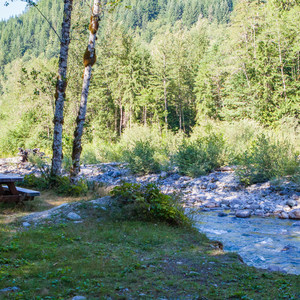



Comments
Sign In and share them.